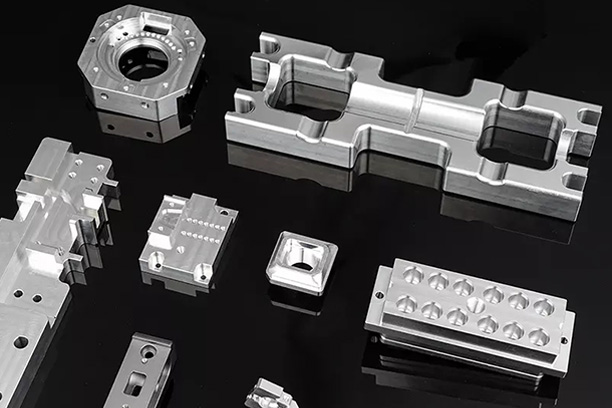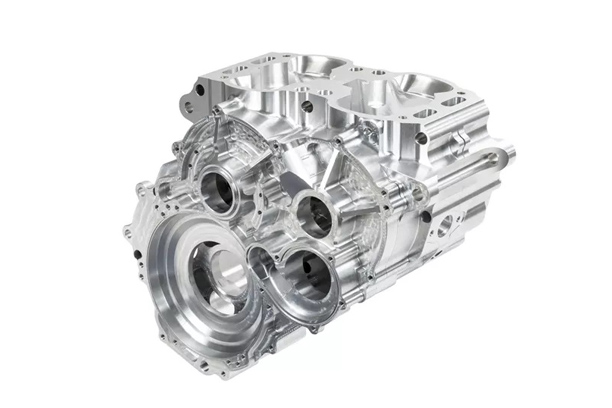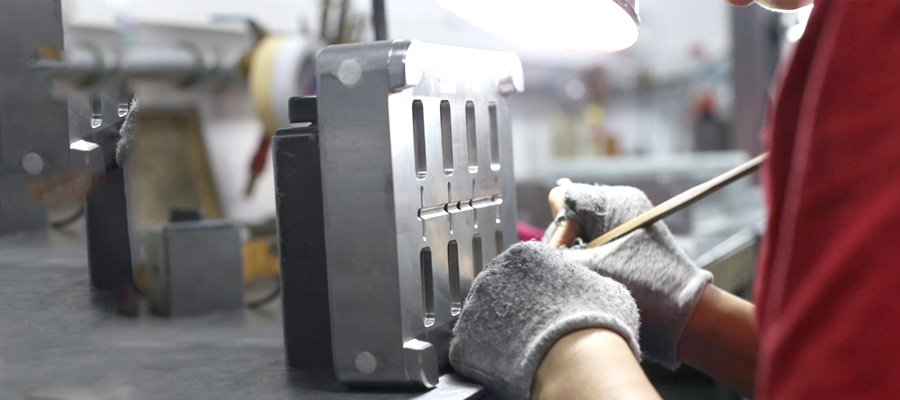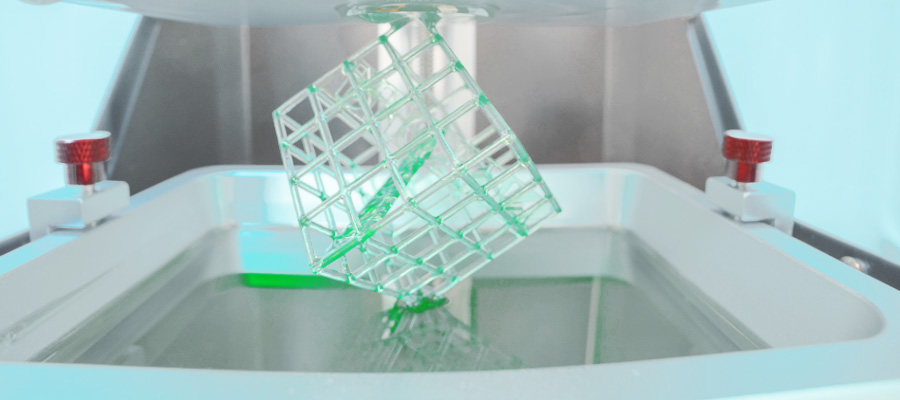When it comes to manufacturing products using CNC machining, there is a great deal to understand about the axes used in CNC machining. This is due to their significance and the fact that most contemporary CNC machines often use 3-, 4-, and 5-axis CNC Machining in their operations.
Reading this article, you will learn 3-axis, 4-axis, and 5-axis CNC machining. This will entail presenting their fundamental ideas, comparing them, and providing guidance on how to choose one of them for your machining project.
3 Axis CNC Machining
Even though 3-axis CNC milling is still among the most common and extensively used machining techniques, it is also the most straightforward. The workpiece remains in a single place during the process, and linear movement of the spindle is possible in the X, Y, and Z dimensions.
As can be seen, this particular method of CNC milling is on the simpler side, and it is best suited for producing goods with straightforward construction. For instance, it works quite well for components that are not very deep; nevertheless, this method has significant limitations when working with deeper and narrower cavities.
The task may subsequently become very labor-intensive, which results in a finish that is not quite as good as it might be. As a result, manufacturing planar milled features, drillings, and threaded holes along an axis is an application that lends itself particularly well to 3-axis machining.

4 Axis CNC Machining
A rotation around the X-axis is added by the fourth axis, which is termed the A-axis. As with 3-axis machining, the spindle movement may occur along three linear axes (X, Y, and Z), and the additional A-axis is created when the workpiece is rotated. There are various alternative configurations for 4-axis machines. In most cases, they involve the “vertical machining” version, in which the spindle spins around the Z axis.
In 4-axis machining, the workpiece is placed on the X-axis, and it is feasible for the fixture to rotate on the A-axis. This allows the workpiece to be machined in a manner that is more economically viable than what is theoretically achievable on a 3-axis machine. Machining times are drastically reduced while precision is maintained.

5 Axis CNC Machining
The method of machining with a 3-axis CNC machine is quite similar to the process of machining with a 5-axis CNC machine. However, it is equipped with several highly useful capabilities that give it those two more axes and a significant amount of additional cutting versatility.
When performing a 5-axis CNC machining operation, the spindle and cutting tool travels along three axes. However, the X-axis (also known as the A-axis), Y-axis (sometimes known as the B-axis), and Z-axis (called the C-axis) are axes that may also be rotated. Depending on how they’re set up, 5-axis machines may use any combination of two of these rotating axes.
Depending on this characteristic, 5-axis CNC machining is used in various contexts and applications. It is capable of milling, turning, and other operations. As a result, you will only use a single machine to operate on several different pieces.

3+2 Axis CNC Machining
The 3+2-axis machining is a subset of the 5-axis machining operation. As the name suggests, it occupies a middle way between the more traditional 3-axis and 5-axis machining methods. In any case, this method of 5-axis machining is both efficient and quick. The process is also referred to as positional 5-axis machining in certain contexts.
In 3+2-axis machining, the spindle or table may revolve along an additional two axes without affecting the cutting tool’s angle. Since the cutter may not always be perpendicular to the workpiece, it may not produce clean cuts.
However, indexed 3+2 axis machining is a subset of the larger 3+2 axis machining category. Here, the inclination of the cutter may be changed manually during cutting.
Simultaneous 5-Axis CNC Machining
Continuous or simultaneous 5-axis machining occurs in 5-axis machining when the cutting tool can be maintained perpendicular to the workpiece at all times. Accessing previously inaccessible locations and producing a high-quality surface finish are both possible with this method. However, in comparison to machining on 3+2 axes, it is a slower process.
The Range of Axes Motion of the 3, 4, and 5-Axis CNC Machines
The Number of Axes on CNC Machines
- 3 Axis – X, Y, and Z axes
- 4 Axis – X, Y, Z, and A axes
- 5 Axis – X, Y, and Z axes and two out A, B, and C axes
The Range of Axes Movement
- X axis – left to right
- Y axis – front to back
- Z axis – up and down
- A axis – 180° rotation around the X axis
- B axis – 180° rotation around the Y axis
- C axis – 180° rotation around the Z axis
Applications of 3, 4, and 5-Axis CNC Milling
3 axis CNC milling is one of the most common methods to make mechanical parts and is most suitable for:
- Milling slots
- Drilling holes
- Cutting sharp edges
- Automatic/interactive operation
4 axis CNC milling is a versatile machining technique and is most commonly used for:
- Continuous cutting
- Engraving curved surfaces
- Intermittent cutting
When it comes to manufacturing a component needing to involve a series of processing intricacy and accuracy, 5 axis CNC milling may be the most ideal method to achieve the following features:
- Improved productivity
- Better quality finishes
- Increased feature accuracy
- Sophisticated shapes and geometries
- Machining intricate details
Differences between 3-Axis and 5-Axis CNC Machining
The primary distinction between the two milling machines is that the workpiece may be treated from three axes with a 3-axis milling machine but from five axes with a 5-axis milling machine. You can make accurate components rapidly and at a reasonable cost because both of these manufacturing methods are adaptable, automated, and reproducible. On the other hand, for several reasons, you can decide to utilize one instead of the other.
3-axis machines are an option if you are working with a limited budget and your cutting needs are limited to a flat surface. Besides being more affordable than those with five axes, machines with three axes are easier to program, so you won’t need to suffer the expense of dealing with costly specialist programmers and operators. Additionally, the amount of time spent on preparation is reduced with 3-axis machining.
You should most likely employ 5-axis machining if you need to make a product that is either deeper or has a more complicated geometric configuration. Using 5-axis machines eliminates the need to manually rotate the workpiece, which enables you to manufacture it from all sides. You will be able to make bigger components more quickly if you use 5-axis machining because of its better yields, more precision, and improved flexibility of movement.
Difference between 4-Axis and 5-Axis CNC Machining
The number of extra axes available in CNC machining is the primary factor that differentiates the 4-axis and 5-axis methods, leading to several further minor distinctions.
Difference in Axes
4-axis in CNC machining, the A-axis is the only additional axis available; in 5-axis CNC machining, however, the A-axis may be complemented by either the B-axis or the C-axis and vice versa, depending on the application.
Rotation in Axes
4-axis Machining with a CNC machine permits rotation on the A-axis, but machining with a 5-axis machine permits movement on two of the three axes (A-, B-, and C-axis).
Flexibility
The difference between 4-axis CNC Machining and 5-axis CNC Machining is that the latter has one more axis. In addition to being an additional feature, it is also not localized. In the context of 4-axis CNC machining, “localized” refers to the fact that the additional axis is always located on the X-axis, while the machining done on a 5-axis CNC machine may be performed on two of the XYZ axes. Regarding flexibility, 5-axis CNC machining has an additional advantage over 4-axis CNC machining due to this additional property’s non-localized nature.
Cost
5-axis CNC machining is more expensive than 4-axis CNC machining due to its additional features and capabilities.
All 4-axis and 5-axis machines provide more freedom of movement for the cutting tool and can approach a workpiece from more angles than 3-axis machines. While a result, fewer setups may be used, even as the complexity and precision of the machining processes are improved.
Choosing Between 3-, 4-, and 5-Axis CNC Machining
Understanding a few things is necessary before choosing between 3-, 4-, and 5-axis CNC machining. When deciding between them, the following are the three most crucial factors you should take into consideration:
The Budget
On the budget spectrum, the 5-axis is more expensive than 4-axis, which is likewise more expensive than 3-axis. The reason is that your capabilities, functions, and features expand when you advance from level 3 to level 4, then level 5.
The Requirements
It would be best to opt for 5-axis CNC machining when working with complicated items. However, 3-axis and 4-axis machining are the best choices for projects that want to produce both tiny and uncomplicated components.
Operating Procedures
When it comes to the number of axes, the more you have, the more difficult it is to operate. In circumstances that call for an uncomplicated operating method, 3-axis CNC machining is the most straightforward option, trailed by 4-axis CNC machining in terms of complexity.
Conclusion
Learning the differences between 3-axis, 4-axis, and 5-axis CNC machining is important in achieving the correct product, especially if you are just starting. This is because the majority of CNC machines use these three machining processes. Therefore, this article aims to discuss the distinctions between the three.
Runsom – CNC Machining Comprehensive Solutions Provider
Still, have no idea about how to choose between the three machining processes? Runsom is here to help. Our specialists exceling in CNC machining technologies are proficient in customizing high-quality products according to your project requirements. They can give professional reviews and suggestions for your CNC machining task. Runsom Precision can be the ideal partner for your machining project. Get started on your project with an instant quote.
Other Articles You May be Interested in:





